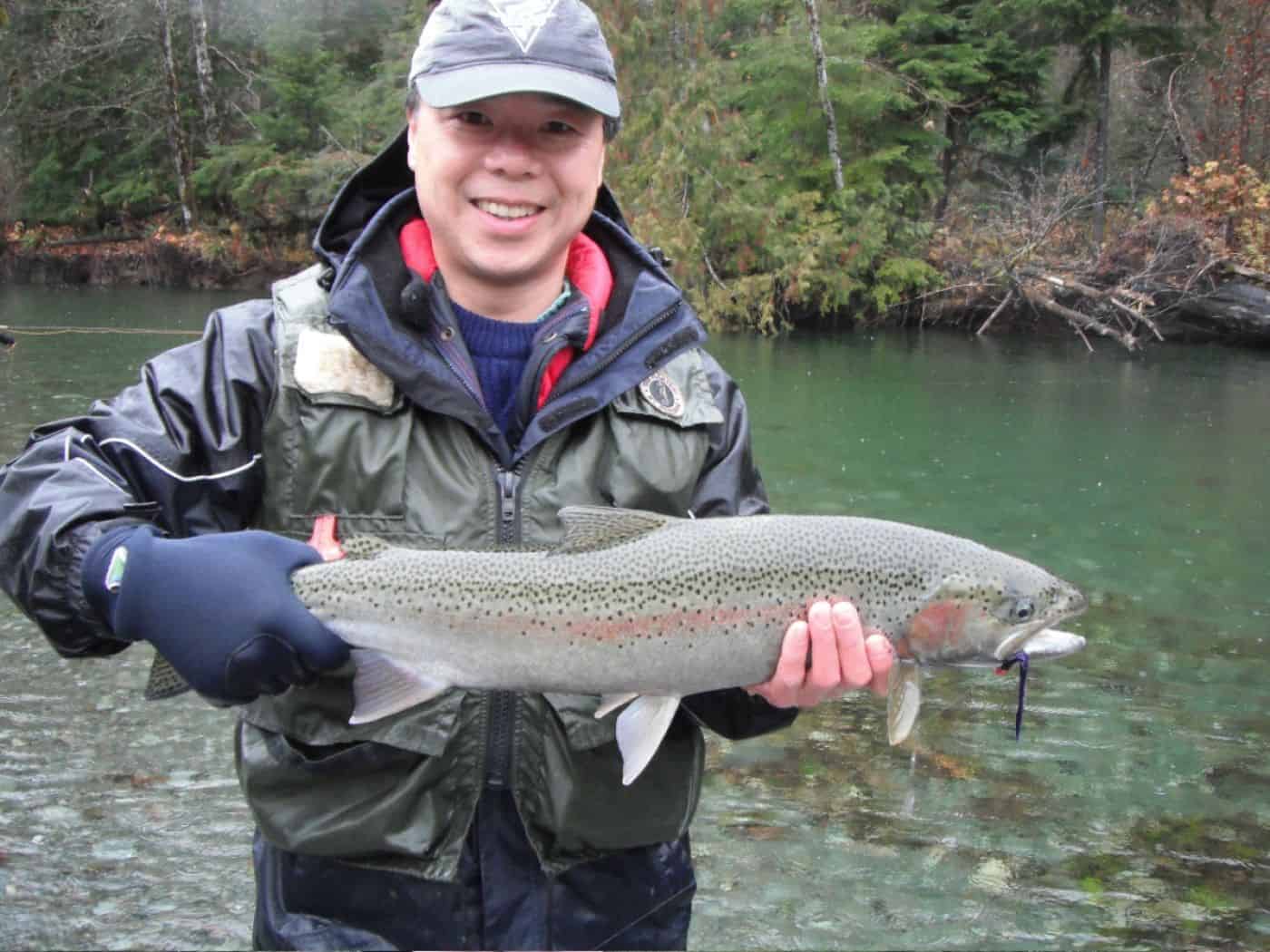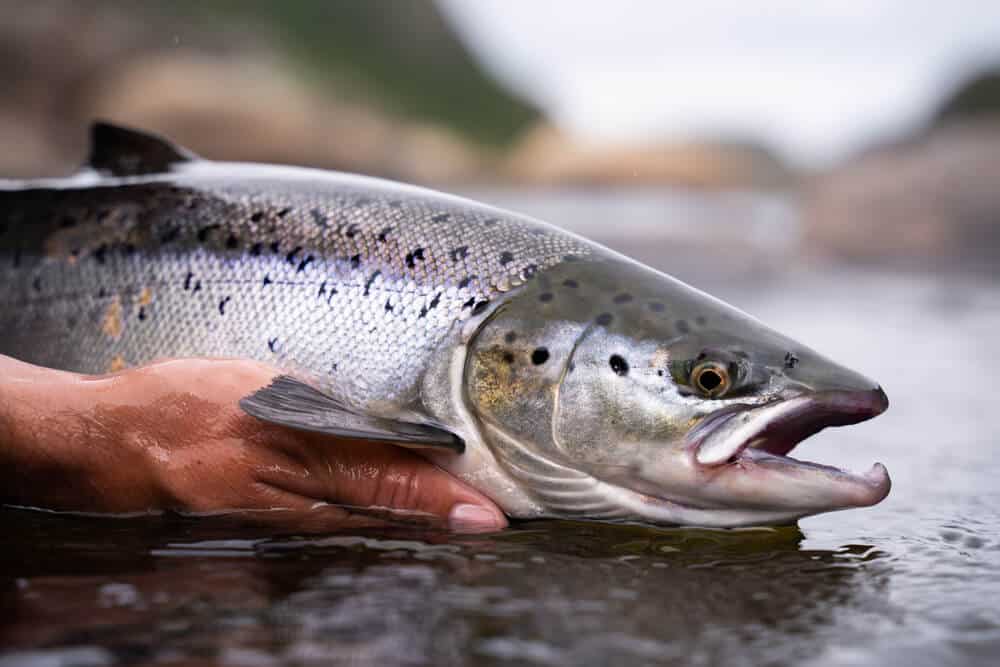Drift fishing for salmon is a sport that many avid anglers enjoy because of the way it puts anglers in close proximity to a large number of fish. Drift fishing, also known as fly-fishing, typically involves anchoring at a specified location and waiting for the fish to come to you. The technique can be very successful for catching salmon but it does require patience and must be performed correctly in order to be effective.
People love to catch salmon and it is a popular activity for adults and children alike. Every year at the beginning of the season, anglers come and watch as the fish swim upstream and jump up waterfalls to spawn. At this time of year, many anglers will head out themselves to try their luck. They can choose from one of two methods: either fishing downstream or fishing drift fishing upstream.
What is Drift Fishing?
When people head out to sea for a day of fishing, they usually go with the intention of reeling in their catch. Drift fishing is different in that it does not require any casting or reeling in. There are many different theories as to how drift fishing works, but the most popular theory is that when you put your bait on the end of a line and set it adrift, waves and currents will carry it all around and eventually push it up against where fish congregate.
Where can it be done?
Where can drift fishing be done? Drift fishing can be done in the rivers, lakes, and seas. The term “drift” means to cast your hook near or into water while not standing on the bank of the body of water. Casting it too far may result in getting snagged on a tree, bush, or anything else that is poking out of the water’s edge.
Annual events are held throughout the world, which offer competitive drift fishing for individuals or teams. These competitions span multiple days, with different deadlines. The distance for this style of fishing is usually 10 miles, with a total time allowed of 12 hours.
The Gear

Drift fishing requires light line, heavy sinker, leader, and hooks.
If you are looking for a new fishing experience, look no further than drift fishing. Drift fishing gears are specially designed to allow you to cast your bait into the water and let it float downstream without once touching the rod. The movement of the current will cause your bait to move around, attracting fish from the bottom of the river or lake. If you want to really get away from it all, take a hike down a trail and head out on your next drift fishing adventure!
Making the Drift Rig: The drift rig consists of a hook tied to the end of the line, which is then attached to the sinker about 4 feet below this.
Drift rigs are made of bamboo and create the perfect setup for the angler to allow fishing lines to easily drift back and forth. A drift rig is a simple and cost-effective way to catch fish more efficiently and on a larger scale. The materials needed for a drift rig can be obtained for free or at little expense.
A drift rig consists of three main components: a bottom section, a frame, and an anchor.
Fishing Techniques: There are 2 main ways to retrieve the bait during drift fishing. One is called “dragging” and the other is called “jig
Drift fishing is a technique that uses current to catch fish by waiting for fish to be transported past the boat while casting downstream. The term “drift fishing” is often used interchangeably with streamer fishing, fly-fishing, and bottom-fishing. It is typically done while standing in the boat, but can also be done from shore or while wading; however it requires more skill to do so without getting too wet.
Equipment Needed
Many anglers enjoy the unpredictability of fishing with streamers, but an even more exciting way to fish is drift fishing. Drift fishing requires a few key pieces of equipment that will allow you to have hours of fun on the water throwing your flies in front of large trout. The first thing needed for drift fishing is the boat itself, which can range from a kayak or inflatable raft to a 16 foot aluminum hull.
It is a great way to fish for bass and other species on reservoirs and slow moving rivers. Drift fishing involves wading out into the water and casting your lure in front of you while letting it move downstream with the current. Equipment needed for drift fishing includes: a long rod, a rod holder, a reel that can cast heavy lures (time depends on the size of the fish), heavy line, and terminal tackle.
How to do it
Eager to try out this new technique, I set out on my boat to find some salmon. When I found where they were swimming, I anchored up and got ready for the process. Drift fishing is a very interesting technique that takes time and preparation. You have to wait for them to get close enough to use your fishing rod. One the strike, you have to reel in quickly so that you don’t lose them.
In the Pacific Northwest, drift fishing for salmon is a favorite among wilderness enthusiasts. Drift fishing consists of casting one’s line from a drift boat onto the water and letting the current carry your line downstream in hopes of hooking into a salmon.
For more information you can check the below video and hopefully this video will help you to find the necessary guideline about it..
Takeaway
Drift fishing is an effective way to target salmon in the summer months. It applies to all types of water bodies and can be done in the early morning or late evening when temperatures are cooler. If you want to try drift fishing for salmon, be sure to check with your state department of fish and game before performing any activities in freshwater areas.
It is an effective way to target salmon in the summer months.


Some genuinely fantastic info , Gladiolus I discovered this. “Now hatred is by far the longest pleasure men love in haste but they detest at leisure.” by George Gordon Byron.
I’m really loving the theme/design of your blog. Do you ever run into any browser compatibility problems? A small number of my blog readers have complained about my blog not working correctly in Explorer but looks great in Chrome. Do you have any recommendations to help fix this issue?